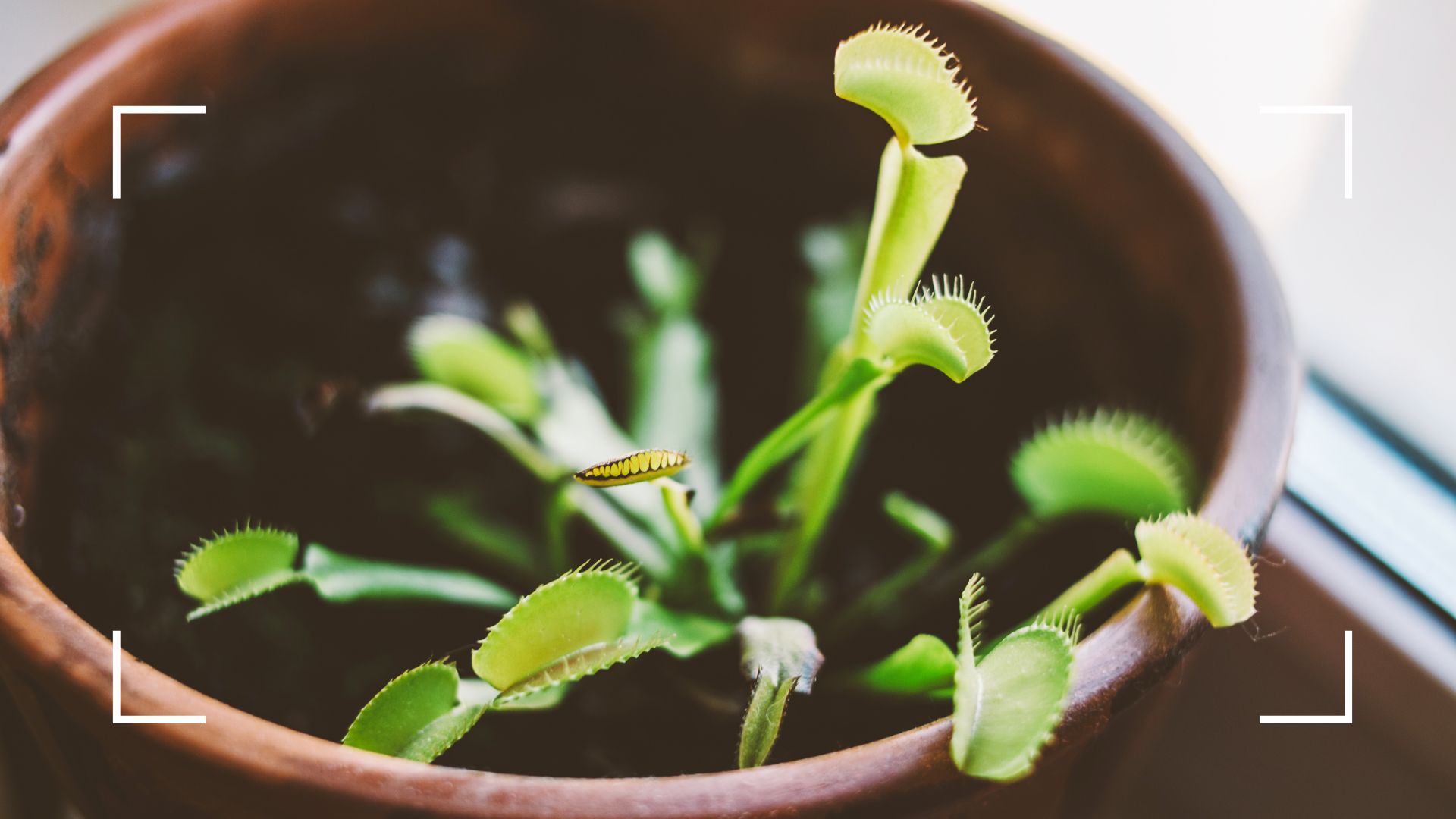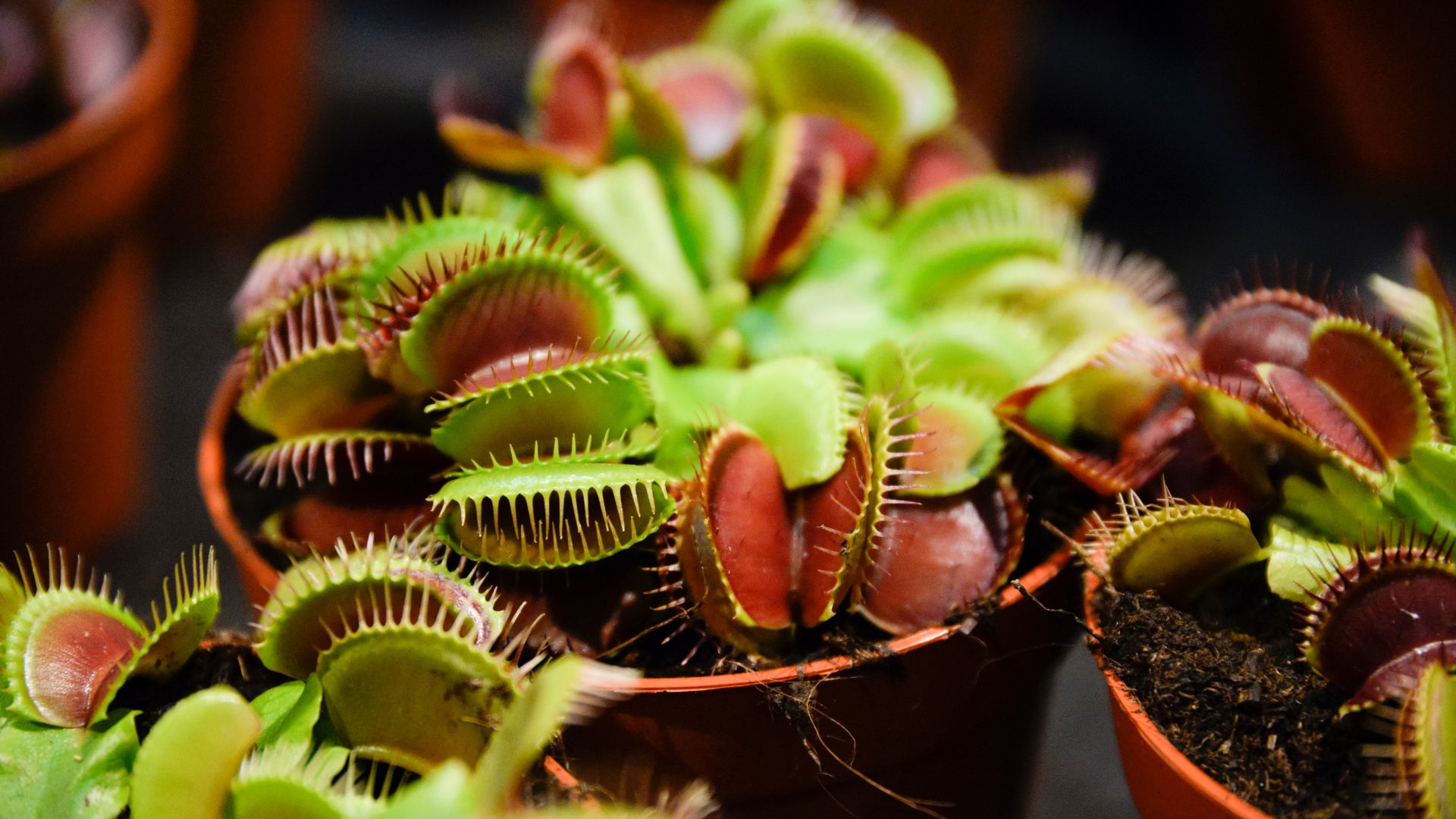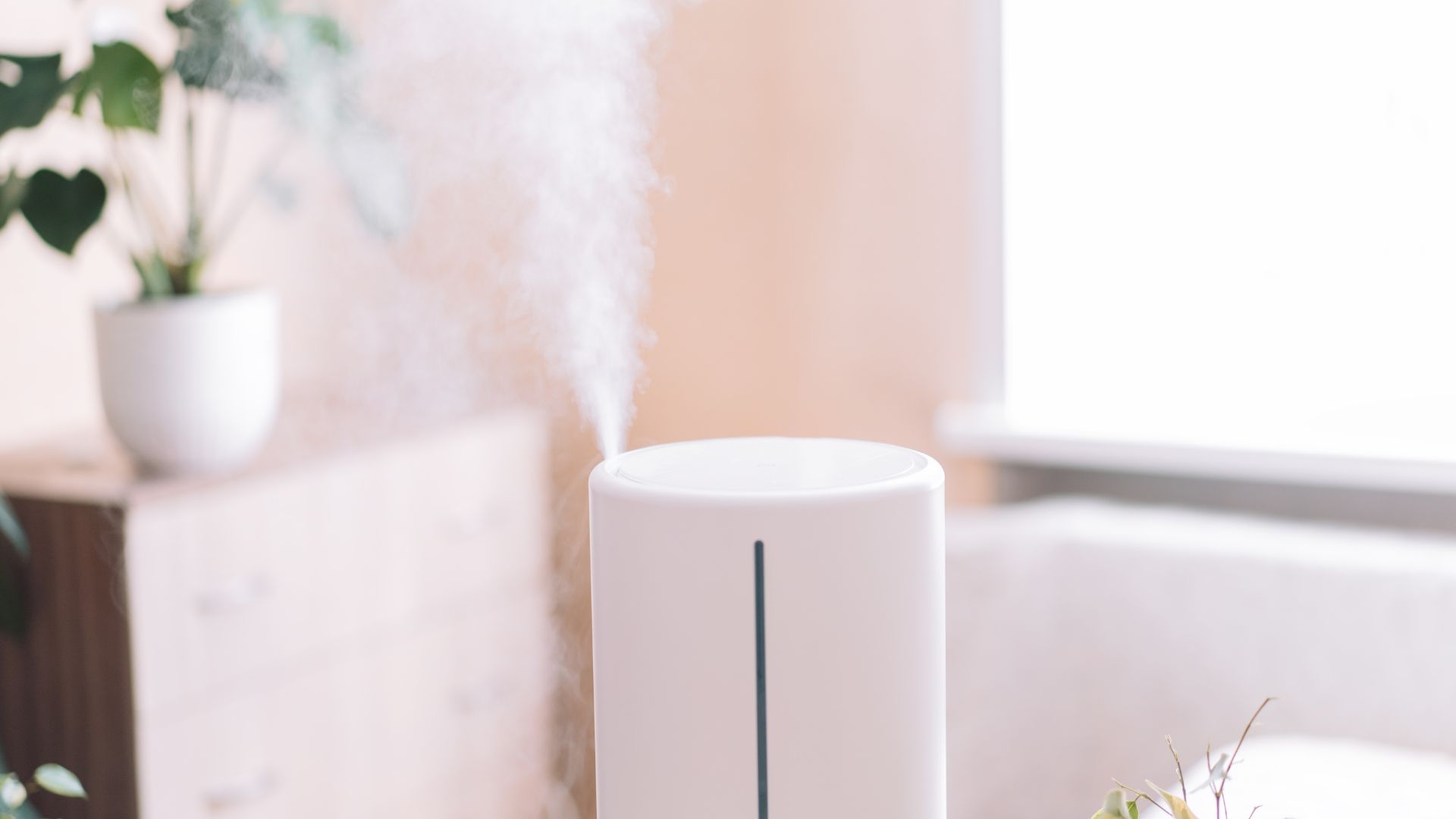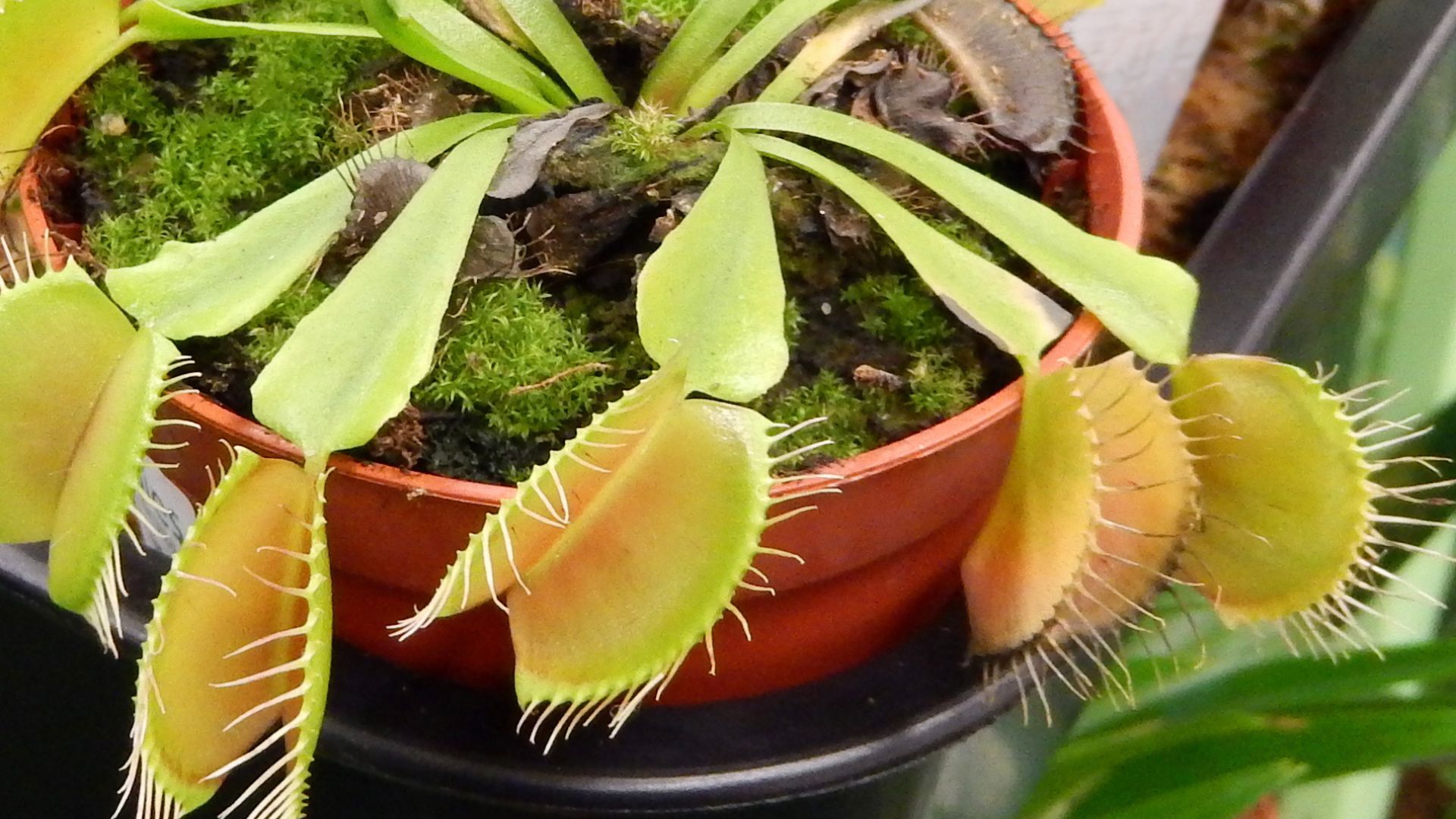
Looking to introduce more unique plants into your collection? The Venus fly trap is a great option, although you might want to learn how to care for it before you take the leap.
Venus fly traps are not exactly one of the easiest houseplants to keep alive, they require a special amount of care and specific conditions to be met.
Similar to how to care for an orchid, it's not just a matter of watering and feeding but also creating their desired atmosphere.
With this in mind, we asked the plant experts to tell us their foolproof way of looking after Venus fly traps and ensuring they thrive.
How to care for a venus fly trap
Whilst you may have mastered how often you should water your houseplants, looking after a Venus fly trap can pose a few more obstacles than a water routine.
Here's a simple care guide to follow that will guarantee a happy plant...
1. Provide plenty of sunlight

Sunlight exposure can have a huge impact on a plant's health, in fact, it's the number one reason why your peace lily tips can go brown. So it's no surprise it has such an effect on Venus fly traps too.
Gardening and plant expert at Fantastic Gardeners, Peter Ivanov says, "They thrive in full sunlight and it’ll be most beneficial for them to place them in a sunny location, for example, a sunny south-facing windowsill, where they can get direct sunlight for around 4 to 6 hours a day."
If you're unable to find a perfect spot Peter recommends using artificial light like fluorescent or LED grow light that will provide the plant with enough light. However, he does warn to keep the lights at least 10 to 18 centimetres away from the plants.
2. Ensure the right soil mix
A plant's soil mix can make all the difference and the reason why it's important to know when to repot a plant as the soil provides key nutrients.
"Venus fly traps need a well-draining, acidic soil mix, such as sphagnum peat moss and perlite or sand mixture, which is most commonly recommended. In any case, avoid using regular potting soil, because it can be too nutrient-dense and harm the plant," explains Peter.
Knowing how to repot your plant into well-draining soil will allow it to improve its overall health and ability to grow.
3. Control external conditions

Unlike how to care for a peace lily, the Venus fly trap requires a more exotic climate in order to thrive. The plant is a perennial native to the swampy regions of the Carolinas in the United States.
Peter explains that here they grow in nutrient-poor, acidic soils and replicating these conditions as closely as you can will be the best way of maintaining your plant's health.
He says, "Also, make sure to keep the soil consistently wet, but not waterlogged, and use distilled or rainwater to water them because tap water usually contains minerals that can harm the plant over time."
It's also important to maintain a high humidity level, for this Peter recommends either a humidifier or simply keeping a bowl of water near your plant.
Along with humidity, you will also need to keep the temperature around 21 to 35 degrees. Unless it's winter, the plant can then survive in temperatures as low as 4 degrees due to its dormancy phase.
4. Avoid feeding
Unlike other plants, Venus fly traps don't actually need extra feeding. Fertiliser is a great way to give other houseplants a boost, however, it can be a little too overwhelming for other plants.
Fiona Jenkins, gardening expert at MyJobQuote says, "Do not give the Venus fly trap fertiliser. The soil they naturally grow in is very poor so any rich fertiliser would kill your plant, they get their nutrition from insects."
As mentioned above, these plants thrive in poor-quality soil as they cannot tolerate nutrients so it's best to avoid using fertiliser or any type of plant food.
5. Observe winter dormancy

Something unique to the Venus fly trap is its winter dormancy. Unlike caring for plants that live by a normal cycle, these plants have a natural process where they go dormant during the winter months. It's a similar story for lawns, which is why the most common lawn care mistakes occur due to unawareness.
"When the weather turns colder the traps go black and it may look dead but it is still alive, just hibernating. Reduce the amount of water you give the plant and move it to a colder room if it’s kept indoors," explains Fiona.
In the spring, the warmer temperatures will revive the plant and new leaves will start to grow, this is when you can start feeding your Venus fly trap live insects again.
FAQs
Can a Venus fly trap hurt me?
Whilst these plants are renowned for their carnivorous diet and may not be on the list of the best indoor plants for your health and well-being, they're no threat to humans.
Fiona points out that a Venus fly trap will only digest insects. It is however not recommended that you test this theory by putting your finger inside the trap, this will only force the plant to expend energy that it cannot recover. So by doing this, you are causing damage to your plant and it may stunt its growth due to a lack of nutrients.
What pests and diseases can a venus fly trap get?
Although Venus flytraps are happy to live in low-quality soil and swampy conditions, there are some pests and diseases that can kill or damage them. Just like pests can be a cause for mould growing on your plant's topsoil, fly traps can wither and die from them.
"The pests and diseases to keep an eye out for include aphids, spider mites and fungus gnats. While these plants aren’t usually bothered by many pests, they can still attract some," says Peter.
To get rid of aphids, Peter suggests submerging your plant in water for 2 days and repeating this after a week. Should you have a rather severe infestation on your hands then consider applying insecticide or neem oil, which can also repel spider mites.
Another important care point that will only arise should your Venus fly trap produce a flower, is the pruning on the plant. Fiona says you should cut any flowers off as they can divert energy from the plant and lead to ill health.







